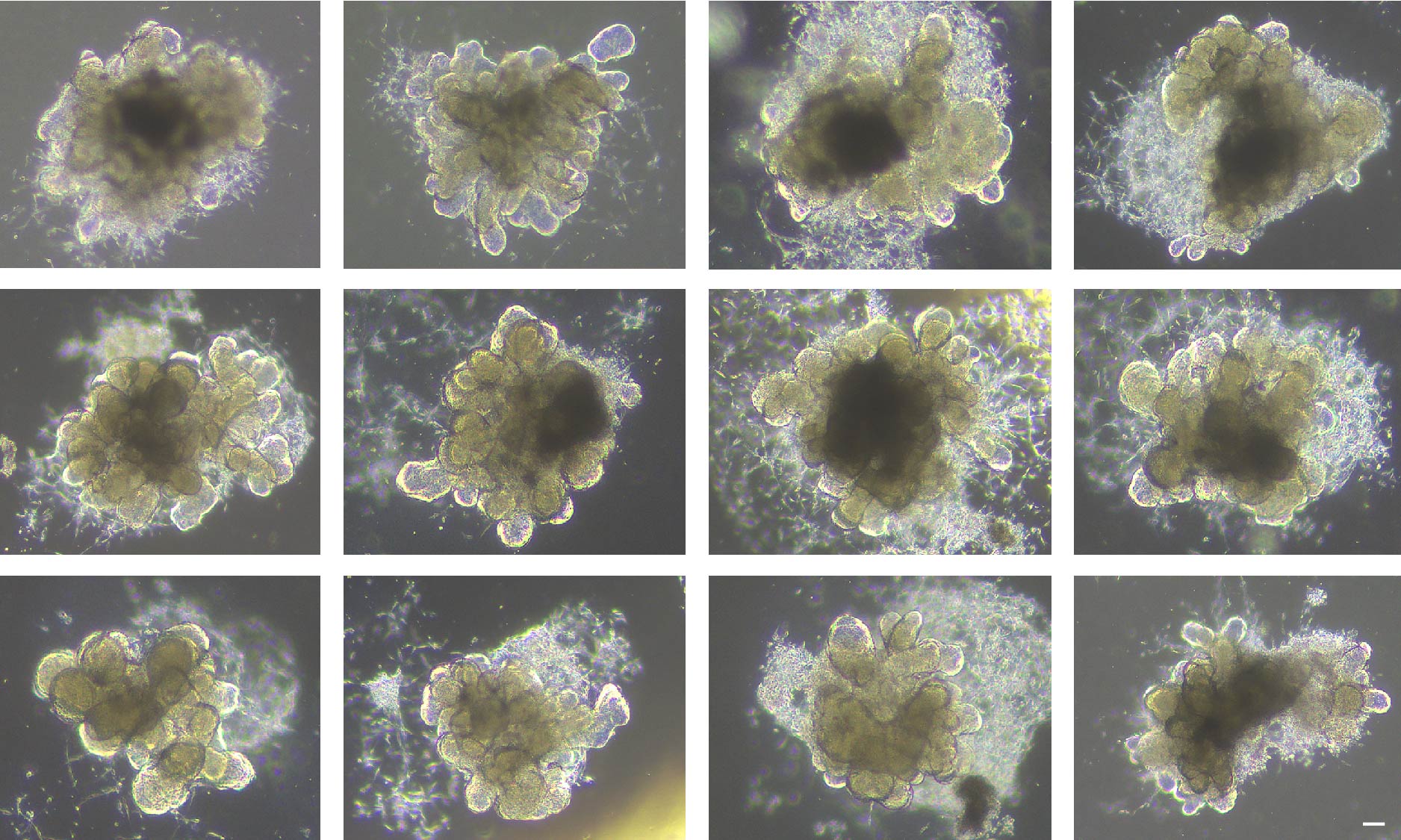

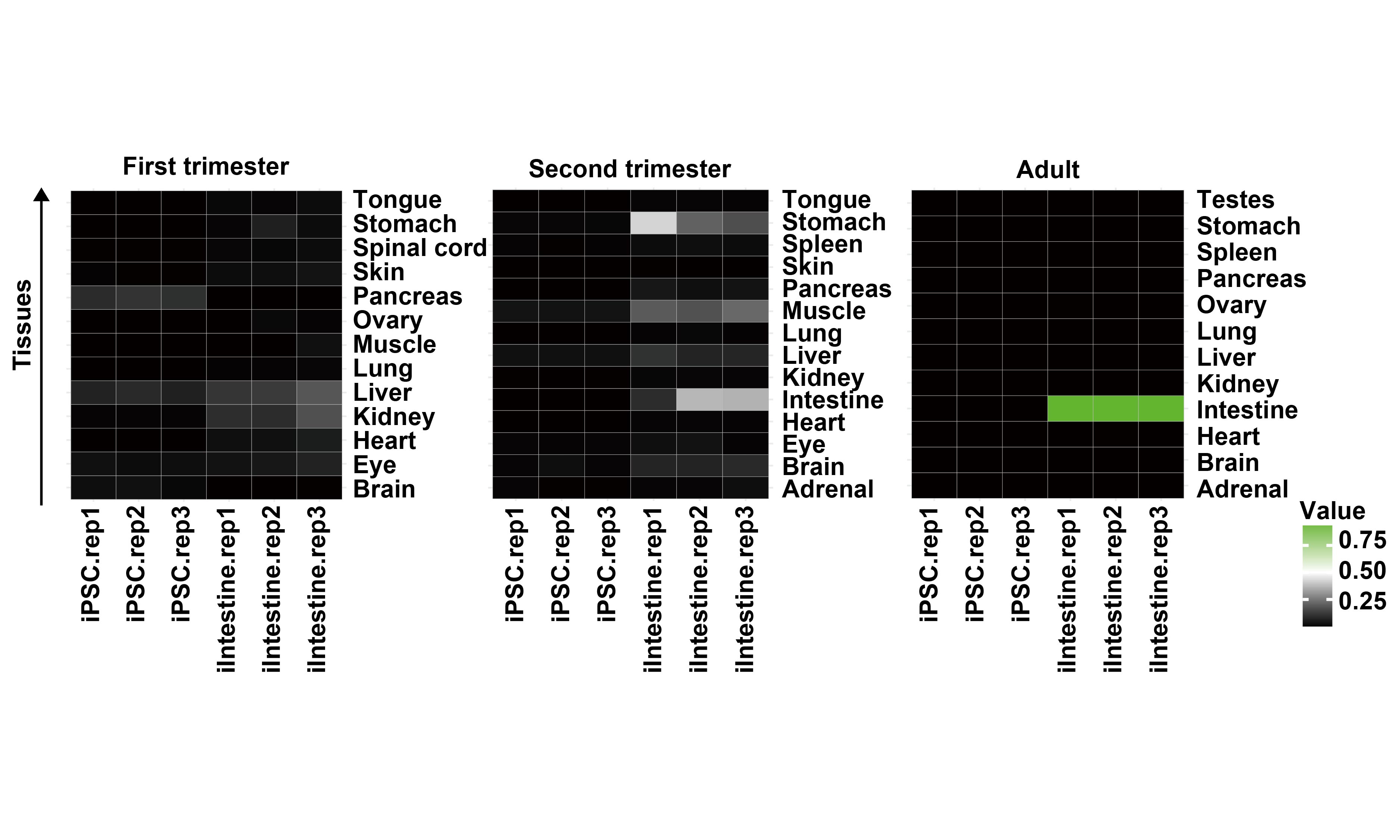
使用“iPSC向小肠类器官分化试剂盒(Cat. 3d0030)”产生
外周间质包裹的极化上皮结构,含有肠上皮细胞、纤毛细胞、潘氏细胞、杯状细胞、神经内分泌细胞、肠隐窝干细胞以及间质细胞
已验证>10种肠道功能,包括吸收(屏障)、转运、分泌、代谢等
适合作为小肠发育研究、病理解析、肠感染研究、再生研究、以及定植研究的新一代人源化精准工具
“即用型iPSC源小肠类器官 (s-model)”是使用iPSC向小肠类器官分化试剂盒(Cat. 3d0030)诱导分化而成。“即用型iPSC源小肠类器官 (s-model)”具备腔体、微绒毛、平滑肌等特征性结构;且包含了多种原代小肠所具备的细胞类型,包括肠上皮细胞、神经内分泌细胞、潘氏细胞、杯状细胞、隐窝干细胞、平滑肌细胞、成纤维细胞、肌成纤维细胞等。相应地,“即用型iPSC源小肠类器官 (s-model)”具备譬如吸收(屏障)、转运、分泌、代谢等多种生理相关的功能,适合作为小肠发育研究、病理解析、肠感染研究、再生研究、以及定植研究的新一代人源化精准工具。
| 遗传信息 | |||
| • 类器官类型: | • 来源: | • 性别: | |
| 小肠类器官 | 成纤维细胞 | 女 | |
| • 捐助者状态: | • 年龄: | ||
| 健康 | 20 |
Characteristics
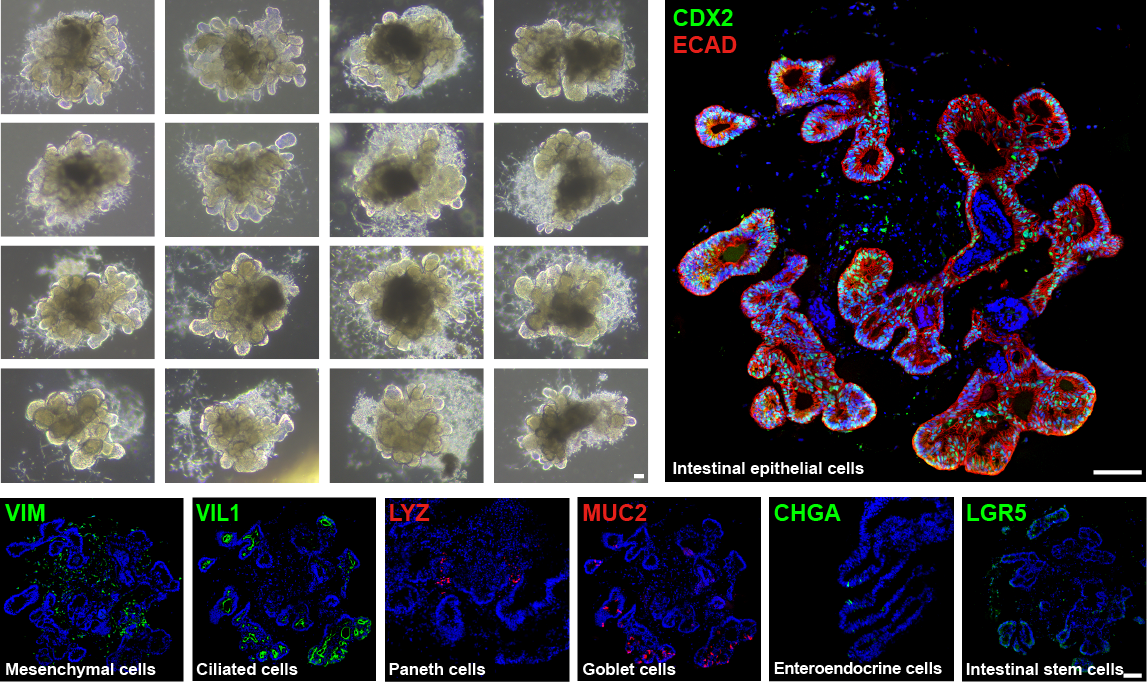
Immunofluorescence demonstrated that day-35 iIntestines were compose of polarized ECAD+ CDX2+ intestinal epithelia and a surrounding VIM+ mesenchyme. Differentiated enterocytes (VIL1+), Paneth cells (LYZ+), goblet cells (MUC2+), enteroendocrine cells (CHGA+) , and intestinal crypt stem cell (LGR5+) were identified within the epithelial tissue. Scale bar = 100 μm.
Characteristics

The efflux of rhodamine 123 (10 μM, a P-gp substrate) into intestine organoids was observed, and this was inhibited by verapamil (50 μM), an inhibitor of P-gp. Scale bar = 200 μm.
Characteristics
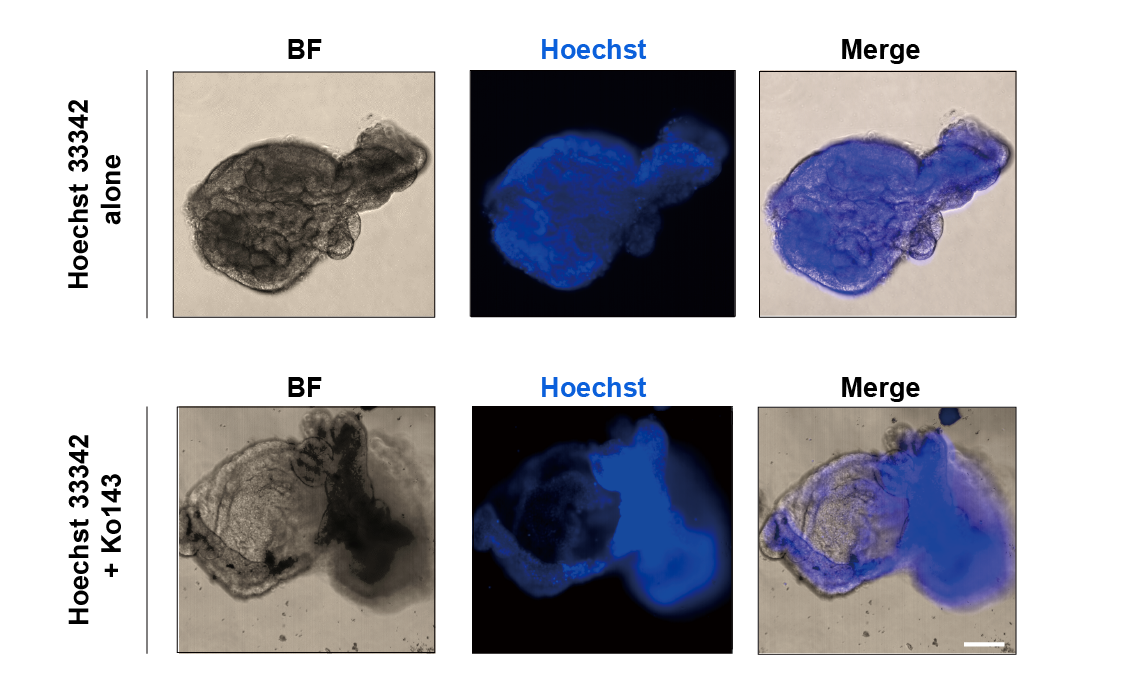
The transport of hoechst33342 (10 μM, a specific substrate of BCRP) into intestine organoids was inhibited by its inhibitor Ko143 (50 μM). Scale bar = 200 μm.
Assigning Developmental Stages to ilntestine with KeyGenes Tool
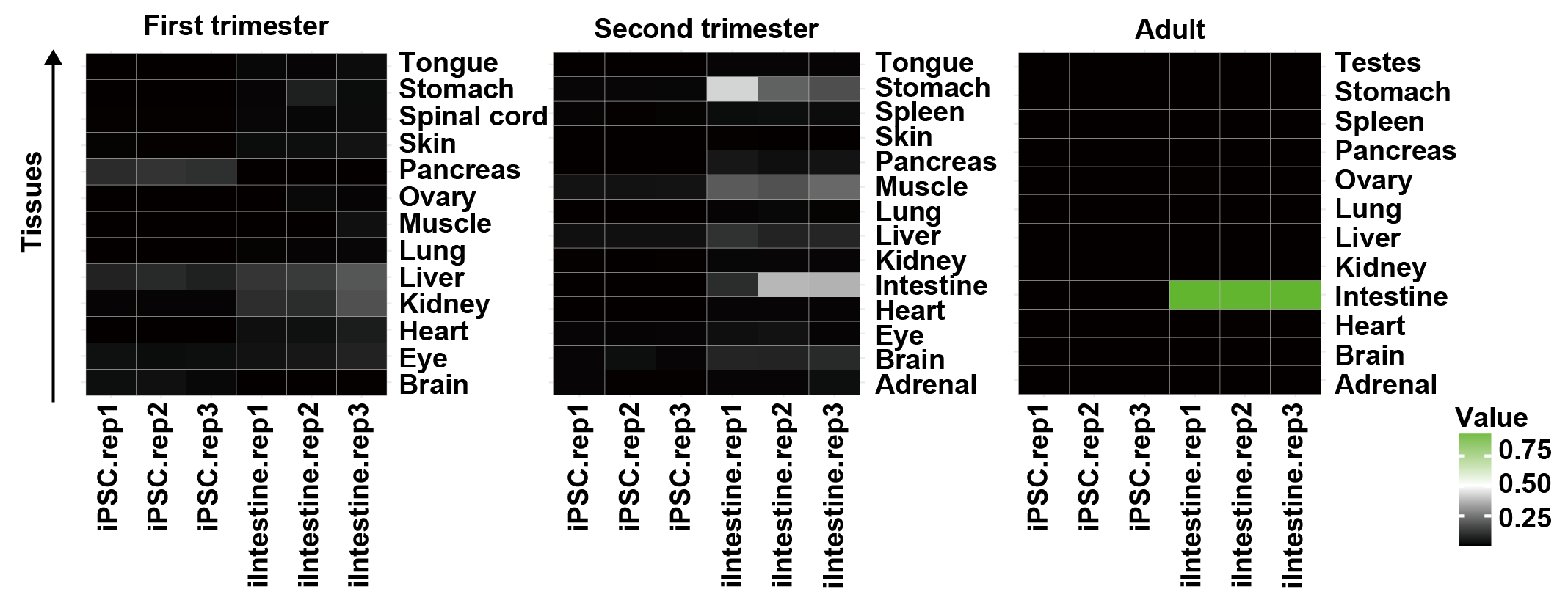
Liu F, Liu T, Wu X, et al. iPSC-induced multilineage liver organoids, small intestinal organoids and brain organoids sustain pangenotype hepatitis E virus propagation[J]. Gut, 2025.
Watanabe S, Kobayashi S, Ogasawara N, et al. Transplantation of intestinal organoids into a mouse model of colitis[J]. Nature Protocols, 2022, 17(3): 649-671.
Sarvestani S K, Signs S, Hu B, et al. Induced organoids derived from patients with ulcerative colitis recapitulate colitic reactivity[J]. Nature communications, 2021, 12(1): 262.
Yoshida S, Miwa H, Kawachi T, et al. Generation of intestinal organoids derived from human pluripotent stem cells for drug testing[J]. Scientific Reports, 2020, 10(1): 5989.
Kwon O, Jung K B, Lee K R, et al. The development of a functional human small intestinal epithelium model for drug absorption[J]. Science advances, 2021, 7(23): eabh1586.
Mithal A, Hume A J, Lindstrom-Vautrin J, et al. Human pluripotent stem cell-derived intestinal organoids model SARS-CoV-2 infection revealing a common epithelial inflammatory response[J]. Stem Cell Reports, 2021, 16(4): 940-953.